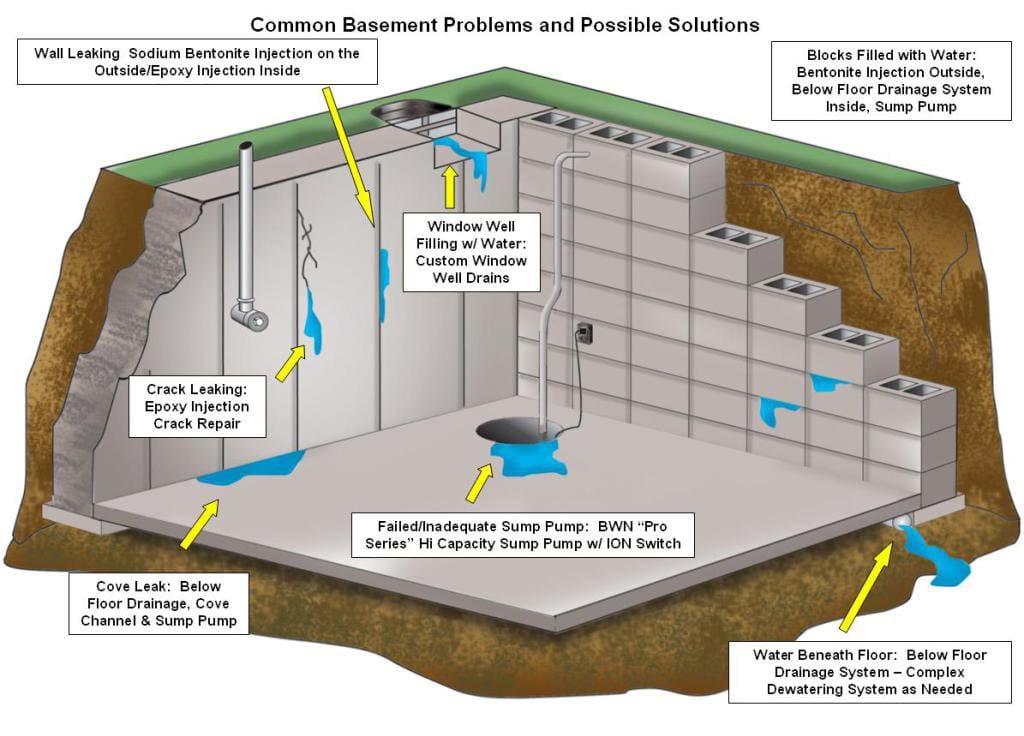The smart Trick of Waterproofing Auckland That Nobody is Talking About
Table of Contents3 Easy Facts About Waterproofing Auckland DescribedIndicators on Waterproofing Auckland You Should KnowHow Waterproofing Auckland can Save You Time, Stress, and Money.About Waterproofing AucklandWaterproofing Auckland for BeginnersWhat Does Waterproofing Auckland Mean?
Waterproofing buildings is the technique of developing a barrier over surfaces of structures, roofs, walls and also various other architectural members of buildings to avoid water penetrations through these surface areas. In recap, constructing surface areas are made waterproof as well as water resistant. Research study has shown that waterproofing just represents 1% of a building's construction prices however when disregarded, it can be in charge of virtually 90% of the damages.
You require to make certain that you get the best kinds of waterproofing materials for your one-of-a-kind requirements. These are conveniently available from distributors of masonry items like, and they're very easy to mix as well as use.
Polyurethane liquid membrane layer method of waterproofing is generally made use of for the flat roofing location and revealed to weathering. This kind of waterproofing product is very sensitive to dampness content existing. Before application, it is crucial to be added careful in examining the moisture material of the concrete slab, otherwise peeling or de-bonding of membrane layers may happen after some time.
It offers more flexibility than the cementitious types of waterproofing. At the end of the day, there are many distinct types of waterproofing materials in the market.
Some Ideas on Waterproofing Auckland You Need To Know
So, how does cellar waterproofing job? Interior basement waterproofing works by resolving water infiltration where it manifests itself inside your home. After extensively taking a look at any type of leak-prone interior areas, employees create a trench in the basement flooring that runs parallel to the affected area. They position a drain system in this trench, guiding water away from the basement inside, as well as secure the trench with concrete to restore the appearance of the original foundation flooring.

Exterior cellar waterproofing strategies reduce this pressure by redirecting water into a gravel-covered footing drainpipe, which lugs it far from your house. While both approaches of basement waterproofing work well, they repair the issue in different methods. Interior cellar waterproofing stays a preferred alternative as a result of its comparatively low cost factor, while outside basement waterproofing benefits homeowners who like to stay clear of interior construction job.
Call us today to get more information concerning the basement waterproofing work we conduct for Georgia homeowners.
Our Waterproofing Auckland Ideas
Interior locations of our home should be kept completely dry from roof to cellar. Waterproofing the house before building and construction will certainly stay clear of these problems. If you water-proof your home, it will prevent damage later.
It is also important for the veracity of the structure. Depending on the degree of water damage or owner choice, waterproofing systems can be mounted inside your home or outdoors.
The poly acrylic chemical remedy is prepared which is utilized to seal the damage or leak on the wall and balcony which will be a strong water-proof base as well as secure and maintain the stamina of any try this site framework. This is done by a highly educated expert team. You require to see to it that high-grade products are utilized for the procedure.
The final action is to put two coats of poly acrylic chemical with white concrete externally. is optimal for structures as well as frameworks that are already having leak or damage along with for new frameworks to prevent leak in future. This process aids in preserving the life and high quality of the building as well as ensures that there is no damages to the structure as a result of the rainfalls.
The 5-Second Trick For Waterproofing Auckland

Apply a thick cement slurry over the surface of the slab. Apply 1:1 -:3 steel display coat. Heal this coat for a minimum of 7 days, by putting damp gunny bags on it. Over this coat, use a finishing layer with cement sand mortar 1:4 and also water-proofing compound based on the style.
Include color pigments such as red, eco-friendly, and so on according to the requirement for an appealing finish. Make a side between the parapet and the sloping piece on the 2nd day. Treat this waterproofing for fifteen days, with damp gunny bags spread out over it. Continuous watering is called for on a sloping slab.
All About Waterproofing Auckland
Inspect the next page density of the Shahbad ceramic tiles. It must be in between 32mm to 40mm (1 1/4 to 1 1/2). Preserve the break joint pattern while dealing with the Shahabad tiles for the base. After repairing the Shahabad ceramic tiles, grout the joints with cement slurry completely. Seal the joints between the Shahabad tiles with the help of C.M.
For the cellar, the stipulation of seamless gutter and also sump is made in P.C.C. itself and also Shahabad base is likewise prepared in the exact same fashion. The gutter is given a correct incline in the direction of the sump. This arrangement is a safety net against the periodic access of rainwater in the basement. Over the plastered Shahabad see here base, raft slab is cast and the R.C.C.
Rough Shahbad tiles are then taken care of to the upright pardi from the exterior. Apply cool concrete paste on the 4 edges and also in the facility of the 25mm (1) Shahabad ceramic tile, Press this floor tile securely over the R.C.C. pardi in line as well as level. At once, solution just an elevation of 1.
The 30-Second Trick For Waterproofing Auckland
After treating, provide the final jointless water resistant plaster layer in C.M. 1:4 over the harsh Shahabad. The whole process discussed above types a box around the framework and also does not allow any kind of water to permeate with or leak from the cellar.